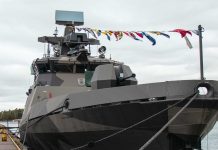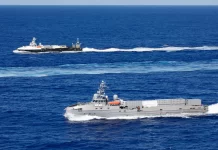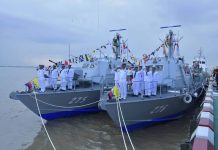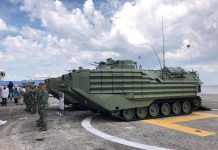The BRP Gregorio Del Pilar PS-15 is one of three Hamilton-class cutters acquired by the philippine Navy from the United States Coast Guard.
Introduce
On August 29, 2018, the flagship of the Philippine Navy ran aground while on a patrol mission in the vicinity of Half Moon Shoal in the waters off Palawan in the West Philippine Sea.
The BRP Gregorio del Pilar, a former US coast guard ship acquired by the Philippines in 2011, was on a regular patrol operation when its starboard hit one of the submerged land features in the area.
The vessel will undergo major repair works for the damages caused on the ship and is expected to be available for operations before the end of 2020.
Recently, the Philippine navy downgraded the designation of BRP Gregorio Del Pilar, BRP Ramon Alcaraz, and BRP Andres Bonifacio, all ex-United States Coast Guard cutters, from frigates into patrol ships. Formerly, the three ships were designated as FF-15, FF-16 and FF-17 to denote their role as frigates. With the redesignation, these vessels will be using the patrol ship designation or “PS”.
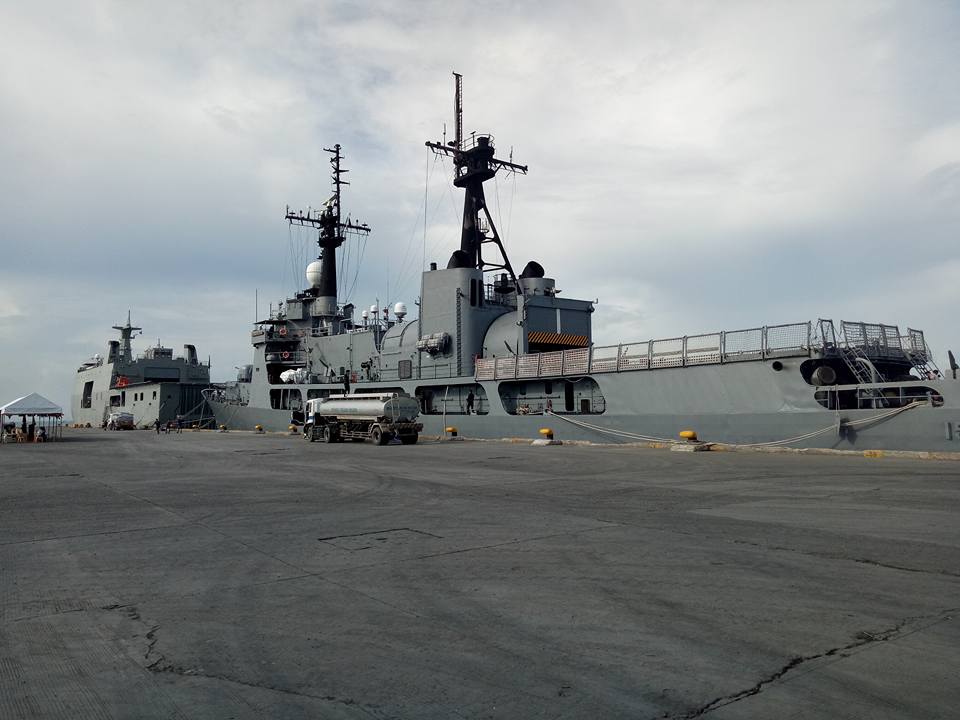
The BRP Gregorio Del Pilar PS-15 is one of three Hamilton-class cutters acquired by the philippine Navy from the United States Coast Guard. She was converted to an offshore patrol vessel of the Philippine Navy and the lead ship of her class. She is the second ship of the Philippine Navy to be named after Gregorio del Pilar, a Filipino revolutionary general known for his role at the Battle of Tirad Pass.
From 1967–2011 the ship was a Hamilton-class high endurance cutter of the United States Coast Guard. The US decommissioned the cutter on March 28, 2011 and the Philippines acquired it under the Excess Defense Articles and the Foreign Assistance Act. Now she has become the Philippine Navy’s largest vessel, known as BRP Gregorio del Pilar. The vessel was launched on December 18, 1965 at Avondale Shipyards near New Orleans, Louisiana as USCGC Hamilton and was named for Alexander Hamilton the first United States Secretary of the Treasury and founder of the United States Revenue Cutter Service. Hamilton was commissioned March 18, 1967.
Design
The vessel is designed with a high level of habitability and provides fairly comfortable accommodations, including air conditioning. The overall length and beam of the vessel are 115.2m and 13.1m respectively, and the hull draught is 6.1m. With a displacement of 3,390t, the class can accommodate 162 personnel, including 19 officers.
The flight deck at the stern of the frigate is intended to support take-off and landing manoeuvres of one type AW-159 Wildcat helicopter. The vessel also features a retractable hangar.
The PS-15 is commanded from an enclosed bridge located amidships. A number of antennae and radars mounted atop the bridge ensure safe operation at sea.
Powerplant
BRP Gregorio del Pilar is the first Philippine military vessel to employ the now common shipboard application of aircraft gas turbine jet engines with the use of controllable pitch propellers and is equipped with two 18,000 horsepower Pratt & Whitney gas turbines. The warship has a maximum speed of 29 knots and can stay afloat for 30 days without refuelling.
BRP Gregorio del Pilar also has two 3,500 horsepower Fairbanks-Morse diesel engines, capable of driving the ship economically at 17 knots for up to 14,400 nautical miles without refuelling.
Armament
The modernised BRP Gregorio del Pilar vessel incorporate new navigational and electronics systems, new armament, and anti-submarine warfare capability.
The original ship was armed with a Mk75 Oto Melara 76 mm Compact main gun, two Mk38 M242 Bushmaster 25 mm chain gun at midships, and a Phalanx CIWS system aft. The CIWS and chain guns were removed by the US Coast Guard prior to its turn-over to the Philippine Navy. Only the Mk75 gun remains, mounted in the bow is intended to offer protection against surface and air targets.
The vessel is armed with two Mk 38 Mod 2 auto cannon systems, which are the improved version of Mk38 M242 Bushmaster guns, for protection against surface threats in both day and night conditions. The warships are also armed with two 20mm Oerlikon guns to combat close-range air threats and 6 M2HB 12.7mm machine guns to engage light targets.
Sensor and Electronic systems
The Philippines reported that the Philippine Navy will be getting sophisticated radar system capable of detecting and tracking surface threats, a Harpoon anti-ship missile system, and torpedo decoy systems. This would be purchased from the United States possibly under a government-to-government deal.
The Philippine Navy plans to modernize the entire ship of the class, with an initial program to upgrade the ship’s sensors, and another program to improve its weapon systems.
The Philippine Navy flagship will undergo various communications, weapons, and fire-control upgrades while undergoing repair for the damages sustained during her grounding at Half-Moon Shoal in 2018.
While awaiting the completion of those repairs, she will undergo communications and weapon and fire control upgrades in order to optimize her down-time period.
Future upgrades are planned to install defensive and offensive missile systems and torpedo launchers, although funding is still being secured and might only be included in the next phase of the Navy’s moderization program.
Thank you for visiting Military-wiki.com. I’m Dung Tran, the person behind all this content. I know some websites are copying my articles. Stop this, or at least respect me by citing the source from Military-wiki.com. Thank you.









